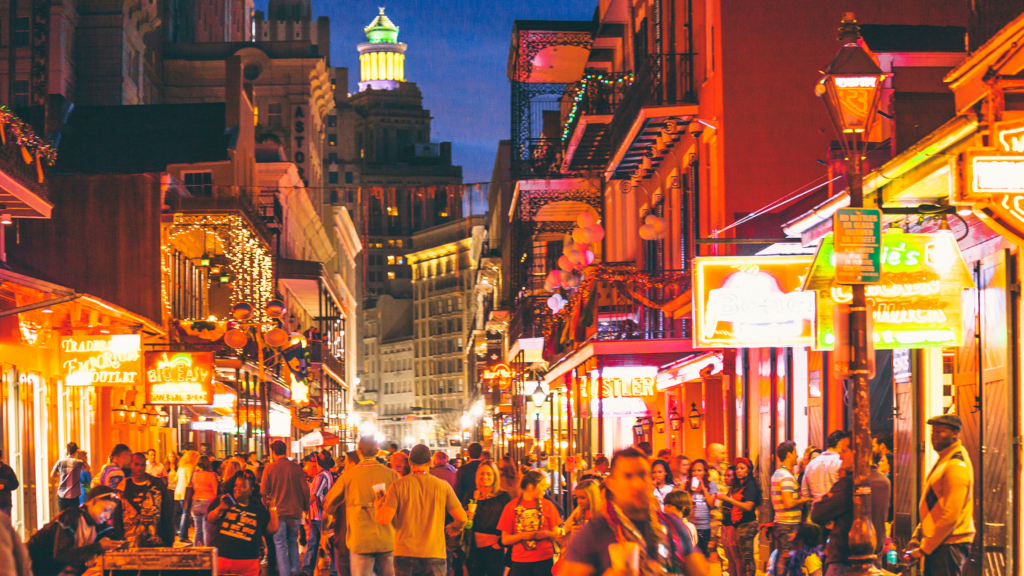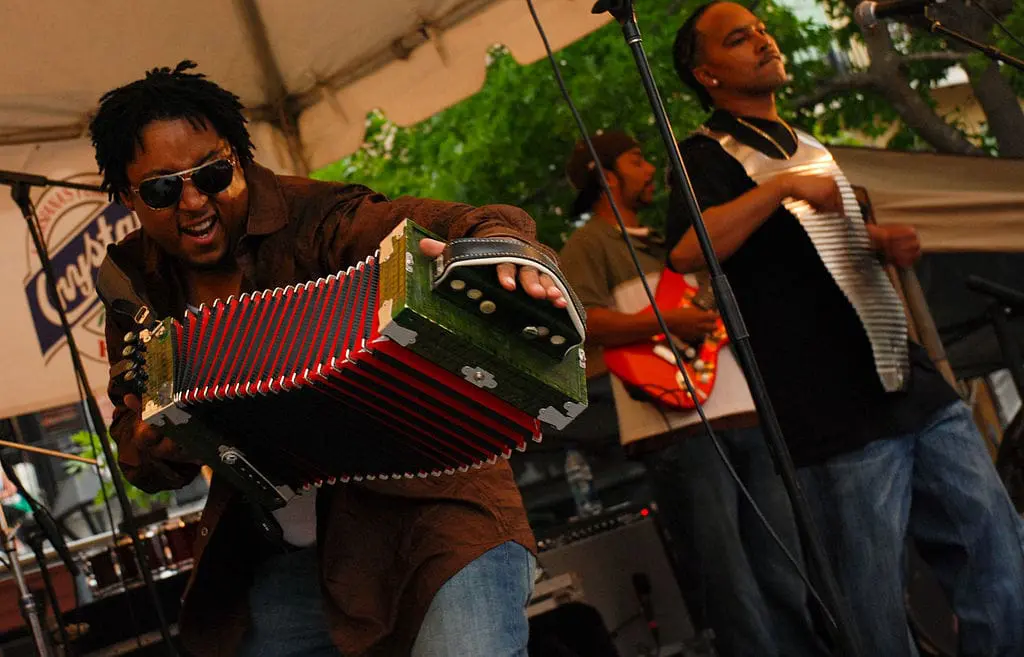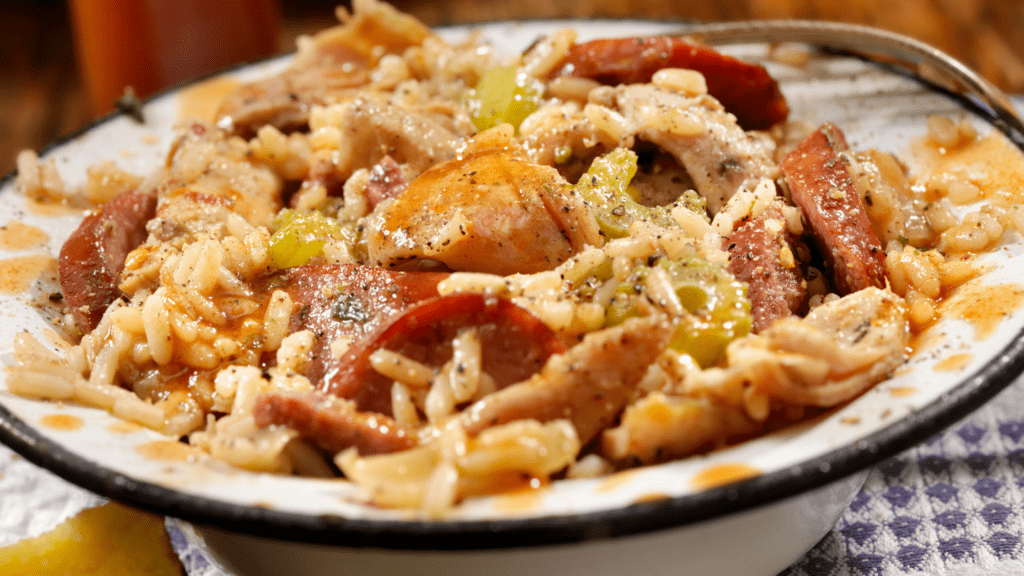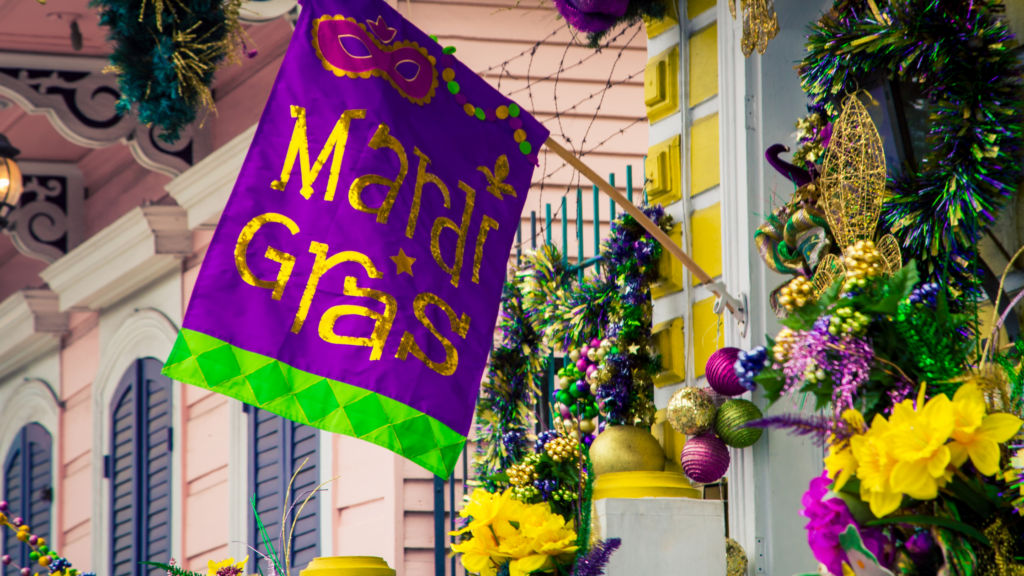How to Handle Different Travel Personalities in Your Group
April 3, 2025
Read MoreEven if you’ve never been, you probably know a little bit about New Orleans. Outrageous Mardi Gras celebrations, melting beignets, or the jazzy sounds for which the city is renowned come to mind. But New Orleans tells an eclectic story that’s a little strange and has many twists and turns.
When the French founded the city of New Orleans in 1718, Native Americans were already well-established here. They gathered, traded, formed alliances, and hunted in what would become known as the French Quarter. Even then, the Choctaw people called the area between the Mississippi and Lake Pontchartrain “Bulbancha,” or ‘land of many tongues.”

Throughout the next century, the city passed from France to Spain, back to France, and finally to the U.S. as part of the Louisiana Purchase in 1803. As a result, the city became a hybrid of French, Spanish, Native, and African American cultures.
This vibrant mix is on full display in New Orleans. The city’s food, music, buildings, and traditions are threaded with Creole and Cajun elements.
So… what’s the difference between the two?
Cajuns were a group of Acadian French settlers who were relocated from Canada to Louisiana in the late 18th century. Their influence remains today with those who speak in a distinct Cajun-French accent, in the spicy foods we know and love, and through lively Zydeco music and dancing.
Visitors can break out their washboards and join a Zydeco dance party!

Creole is a little more ambiguous. It could mean anything from an ethnic group consisting of individuals of European and African, Caribbean or Hispanic descent to those born in New Orleans with French or Spanish ancestry.
Regardless, Creole culture has had a huge impact on New Orleans’ history, art, architecture, and food. Jambalaya, anyone?

Food is a theme that has popped up several times in this post. That’s because the good people of New Orleans are culinary creative geniuses!
Traditional New Orleans fare brings the flavors of a patchwork culture together in dishes like gumbo, crawfish etouffee, beignets, and po-boys.
Diners can linger over a delectable, candlelight meal or grab a quick but incredible bite in a quaint courtyard dripping with history.

The unmistakable flavors here are a delicious chapter in New Orleans’ savory story!
New Orleans is teeming with spirits of all kinds. It’s considered America’s most haunted city – rife with chilling sites and spooky stories of the dearly departed.
Visitors will surely want to stop at the St. Louis Cemetery, where Marie Laveau the “Voodoo Queen” rests in an iconic above-ground grave. Or perhaps visit Lafitte’s, one of the oldest buildings in the city and reportedly haunted by two colonial-era ghosts.

And while brave curiosity-seekers stroll the city streets searching for lost souls, they can brace themselves with some spirits of the liquid variety.
New Orleans’ spirited activities date back to the 1800s. Sugar cane plantations soaked up the fertile soil of the Delta. The sugar cane was then distilled and produced a valuable by-product – rum!
A few decades later, Prohibition made it illegal to manufacture, transport, or sell alcohol for drinking purposes in the United States. Undaunted, New Orleans became the “Liquor Capital of America.” Rum running became a way of life, and its legacy remains.
Today you can combine ethereal and ardent spirits during a haunted pub crawl or ghost tour. Or you can simply enjoy a craft cocktail in one of the 1,400 bars and nightclubs!

We can’t talk about New Orleans’ story without including a chapter on Mardi Gras. It is pretty much synonymous with the city!
Mardi Gras didn’t begin in New Orleans but rather in medieval Europe and ultimately was observed in the French House of Bourbons. In 1699, French-Canadian explorer Jean Baptiste Le Moyne Sieur arrived 60 miles south of New Orleans on the night before Fat Tuesday. He named the spot “Pointe du Mardi Gras” and established Fort Louis de la Louisiane. In 1703, the tiny settlement celebrated America’s first Mardi Gras!

Today roughly 1 million revelers descend on New Orleans to indulge in traditional Mardi Gras festivities and the iconic parade. Masks, beads, coins, and a host of other “throws” are prized souvenirs for partiers!
If you really want to dig into the customs of Mardi Gras New Orleans’ style, check out Mardi Gras World. You’ll get a behind-the-scenes look at the city’s quintessential celebration.
If New Orleans tells a story, this has only been the intro. There are so many more chapters, characters, and plot twists to come.
Recently, Rachel Funel from Visit New Orleans joined the Destination Dispatch team to talk about this amazing city and its quirky and exuberant style. Listen in as she shares ideas for your group visit and more!
April 3, 2025
Read MoreMarch 20, 2025
Read MoreMarch 6, 2025
Read MoreFebruary 20, 2025
Read MoreJanuary 9, 2025
Read More